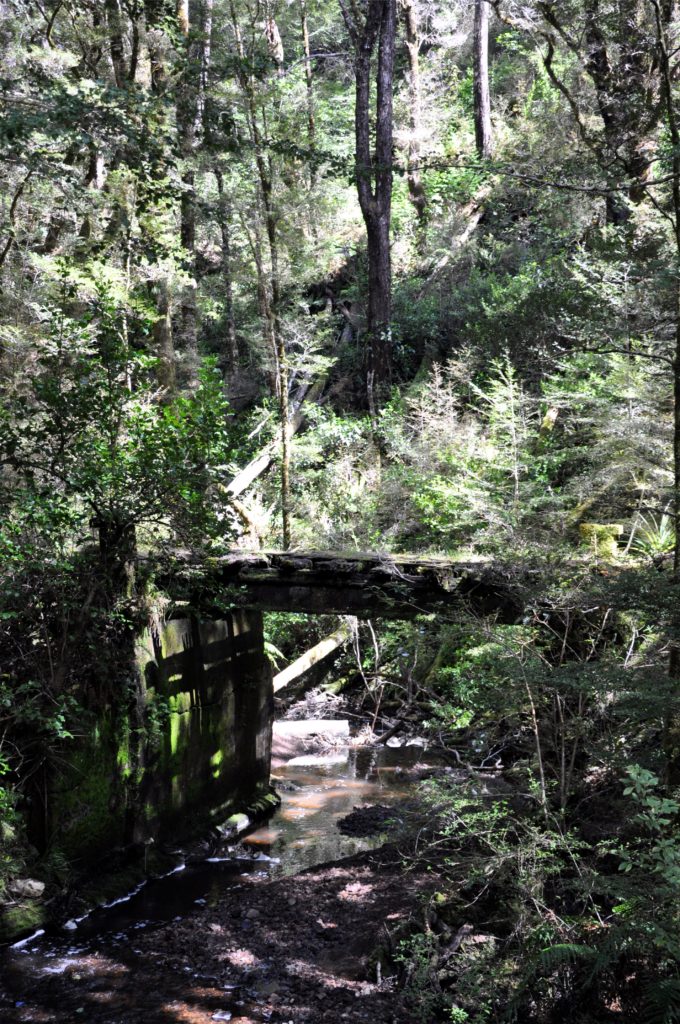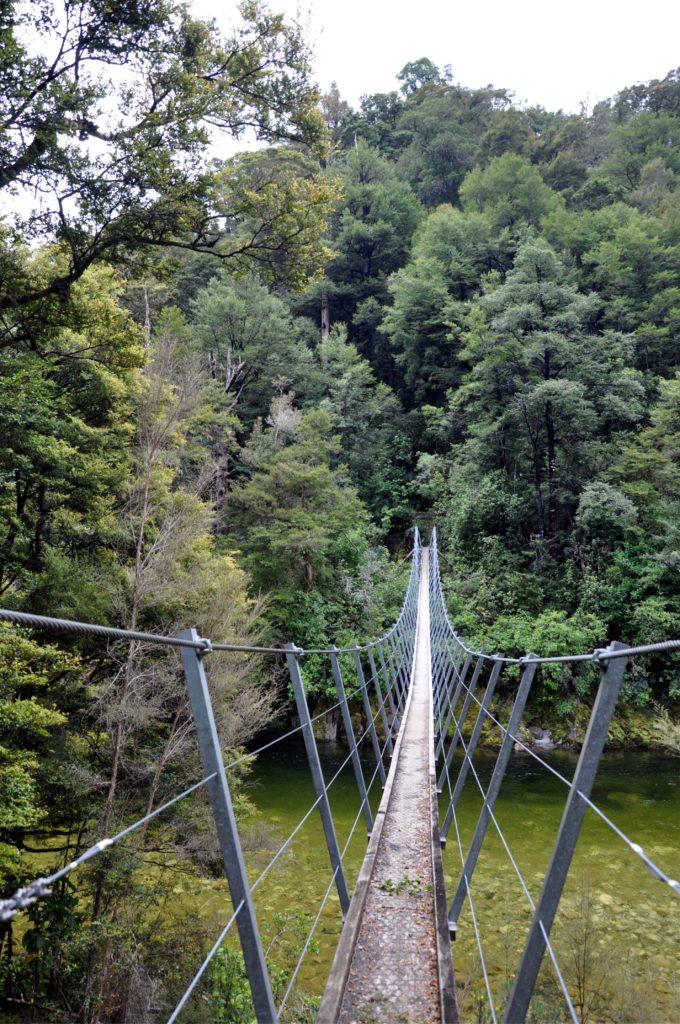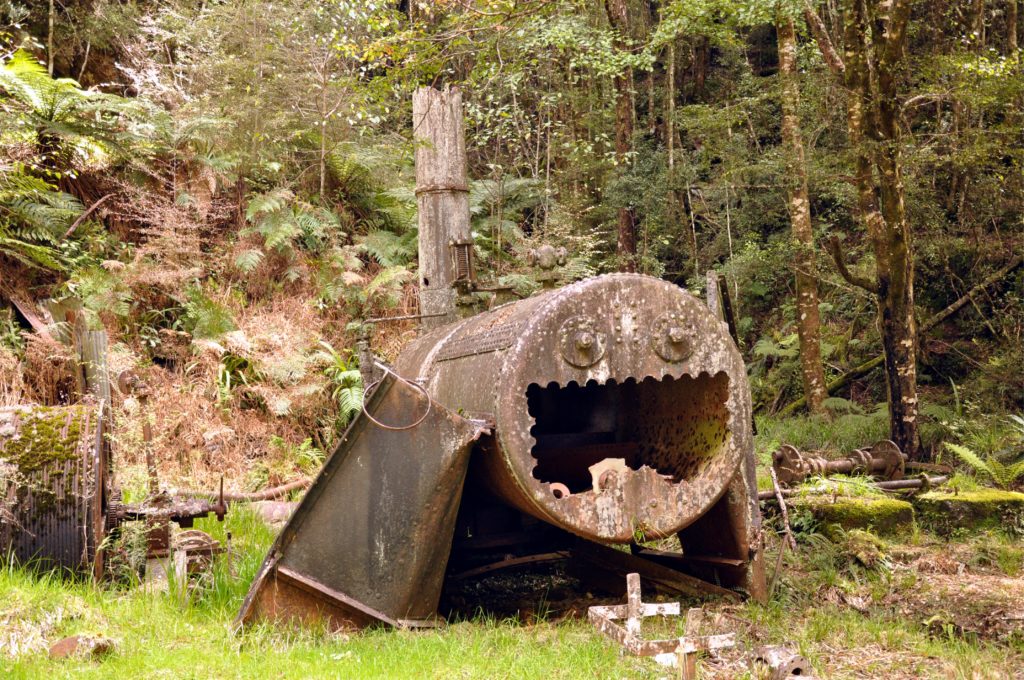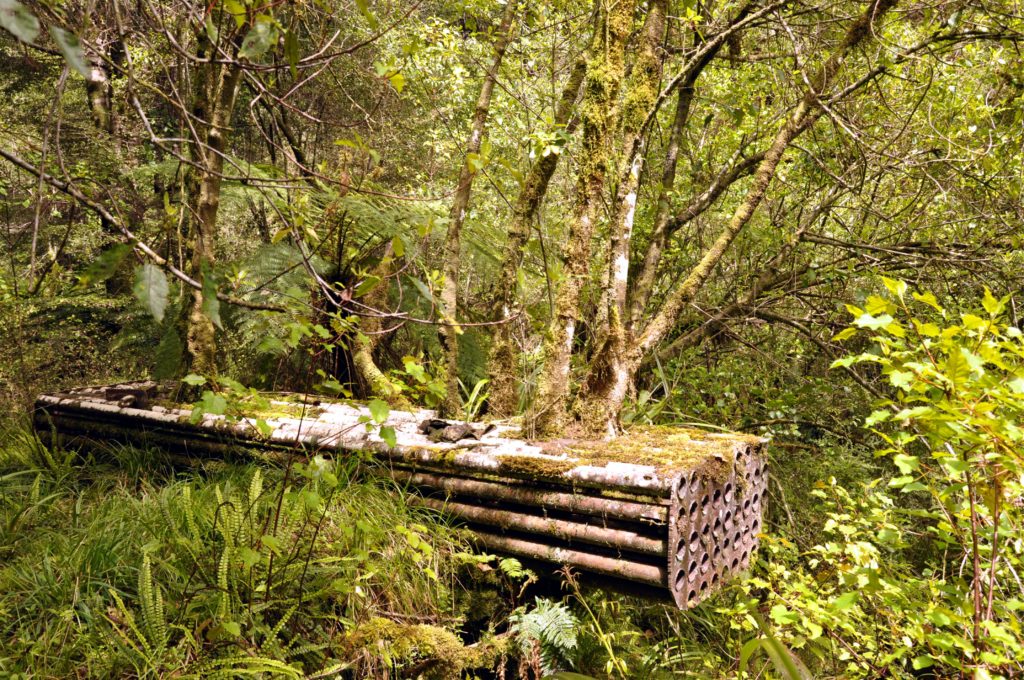We had the opportunity to join some friends who were staying up in the mountains for a quick weekend visit. We often stop in Reefton for a coffee on our way through, and were looking forward to a chance to explore the town a little more.
The area was once the centre of a booming mining industry, and although a few mines remain operational in the area, it is the fishing that now attracts many people to the area. Whilst the boys headed out to some secluded fishing spots in the hopes of catching one of the famed trout, I decided to explore an area just out of town to look at some of the old mines.

The track followed an old mining route along the Murray River valley, as with so many of the tracks in this area it is hard to believe that what is now a quiet trail through the forest was once the main access for mines and towns. The river was named after the Murray brothers who first discovered alluvial gold in the area in 1866.

After a while I came to a bridge crossing the river, off to the side I could see the remains of the old road bridge that provided access to Cement Town. I learnt that the ‘cement’ the town was named after was in fact the gold-bearing conglomerates that were found in the area. Walking through the scrub it was possible to pick out areas that had once been the location of the various buildings that made up the small community.

From Cement Town the track continued up the valley towards the site of Chandler’s open cast mine. The original mine on this site was developed to provide coal to feed the nearby gold mine batteries, however it was abandoned due to a fire. In the mid-fifties the site was converted into an open pit with men working to remove almost twenty five feet of overburden in order to access the coal seam. All that remains in this area is a pit of strangely coloured water and piles and piles of rocks.

I continued up towards the saddle and was rewarded with views down towards the Waitahu River valley. As the weather was pefect for hiking and with the sign a the top of the saddle indicating that it shouldn’t take too long to drop down to the river, I decided to head over the hill to the river to explore a little.

The track wove down through the dense forest, but the thick undergrowth meant that it was impossible to know how close to the river I was. Eventually the trail started to flatten out and I could hear the river through the trees.

I came out of the forest to a small clearing with a tall wooden staircase across from me. The track crossed the Waitahu River on a narrow swing bridge that gave me excellent views in both directions up and down the river valley as well as to the clear, green river below.

After wandering back and forth across the bridge a couple of times, I decided to see if I could find a way through the forest to get down to the rocky beach at the side of the river. No sooner had a found a comfortable rock to perch on for lunch when the sandflies found me. These tiny black flies have a nasty bite and although the West Coast is well known for them, we have typically managed to avoid them for the most part. However, as soon as I stopped moving a swarm of them appeared and so I quickly packed up my lunch and headed back up the hill to enjoy my picnic well away from the sandflies.

After lunch I returned to the main trail and continued on the loop track to some more mines. The next mine site was that of the Inglewood mine, a gold mine that was established in 1871. Perhaps because of the remote location, but I was surprised how much mining equipment still remained at the site.

The winding gear from the old minehead was almost intact and with the leavers set it looked as if someone had just put it aside ready to use again. There were a number of mines in this area which worked together at various points in time, although no single mine, or combination of mines in this area was ever truly successful.

The mines here were abandoned for a brief time around the turn of the century before a new owner took over an installed a cyanide plant in the hopes of increasing profits. Despite the additional resources and processing, the mines remained unprofitable, and although the discovery of a new vein in 1911 provided the area with a brief reprieve operations here never really took off.

The track continued through the forest passing by mine tunnels and shafts hidden in the forest as well as other pieces of mine equipment that had just been abandoned wherever they last were used. In the space of just a few kilometers I passed by eight different mine sites in this valley and is hard to imagine how different my quiet walk in the forest would have been when all these mines were operating. I finished my hike and returned to the cabin happy to find that the boys had managed to catch a couple of lovely trout for dinner.
